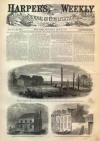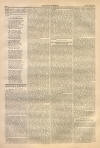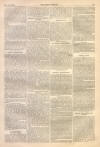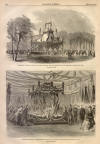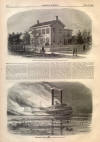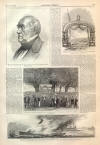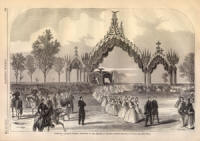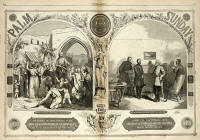The Capture of the Assassin John Wilkes Booth
|
|
This Site:
|
VOL. IX.No. 438.] NEW YORK, SATURDAY, MAY 20, 1865. SINGLE COPIES TEN CENTS. $4,00 PER YEAR IN ADVANCE. Entered according to Act of Congress, in the Year 1865, by Harper & Brothers, in the Clerk's Office of the District Court for the Southern District of New York. THE ASSASSINATION.IN addition to the interesting sketches which we gave last week relating to BOOTH'S capture we are able this week to give illustrations of GARRETT'S house, on the porch of which BOOTH died, the ruins of GARRETT'S barn in which the assassin was shot, and the house in which HAROLD resided near the Navy-yard at Washington. The case against the assassins develops new features. President JOHNSON has issued a proclamation declaring that there is evidence in the Military Bureau which implicates in the assassination JEFFERSON DAVIS, JACOB THOMPSON, C. C. CLAY, GEORGE SANDERS, BEVERLY TUCKER, and other rebels, and offering $100,000 for the capture with-in the United States of DAVIS, and $25,000 each for the capture of the others. What this evidence is we can only vaguely conjecture, and therefore leave to further development. The fact that GEORGE SANDERS and BEVERLY TUCKER have, after most sturdily protesting their innocence, deemed it after all wiser to flee from justice, will not tend to produce a conviction of their innocence. We give an illustration on page 317 of a meeting held in Johnson Square, Savannah, April 22, to take action in regard to the death of President LINCOLN. Dr. VALENTINE MOTT.VALENTINE MOTT, M.D., LL.D., whose portrait we give on page 317, died on the 26th of April at his residence, No. 1 Gramercy Park. He was one of the most eminent among our citizens, and will be remembered not only as a very skillful surgeon but also as a kind and philanthropic man. He was born at Glencove, Long Island, August 22, 1785. His father, Dr. HENRY MOTT, was for many years a practicing physician in this city. The son graduated at Columbia College in 1806, and immediately went to Europe, where he pursued his studies with great ardor and success. At the age of twenty-four Dr. MOTT was called to fill the chair of Surgery at Columbia College, remaining there until 1813. In 1820, he, with Drs. HOSACK, MITCHELL, FRANCIS, and others, established the Rutgers Medical College. About 1830 he began to devote his time to lectures and instruction, and his great abilities have ever since been the pride of the profession. His position as a surgeon was second to no living professor, and challenged from the renowned Sir ASTLEY COOPER the remarkable eulogy; "He has performed more of the great operations than any man living, or that ever did live." Dr. MOTT has left several works of great value to science and literature, among them a translation of "Velpeau's Surgery," the " Mott Cliniques," " Travels in Europe and the East," " Trans-actions of the New York Academy of Medicine," etc. Like the departure of HOSACK, MITCHELL, and FRANCIS, his co-laborers, the death of Dr. MOTT will mark an era in the history of the profession.
PRESIDENT LINCOLN'S FUNERAL.AFTER its departure from New York city the funeral cortege moved on its way to Springfield, where Mr. LINCOLN was buried May 9, 1865. We give on pages 308, 309, and 317 illustrations of the ceremonies along the line of the procession. At Sing Sing a magnificent memorial arch was erected by the citizens over the Hudson River Railroad, of which we give a sketch on page 317. The arch was 41 feet span outside, and 33 feet high, and rested upon two pedestals. The whole was surmounted by an urn, 7 1/2 feet high, from which drooped the American flag. Over the urn was thrown a wreath of ivy. At Cleveland the train arrived on the 28th. A building had been erected for the especial purpose of receiving the remains. The building was twenty-four by thirty-six feet in dimensions, and was fourteen feet high from ground to plate. The roof was of pagoda style, and the rafters were covered with white cloth. Over the centre of the main roof, and directly over the catafalque, a second roof was raised about four feet, and covered in like manner. The catafalque consisted of a raised dais, four by twelve feet on the ground. The coffin rested on this dais about two feet above the floor. On the four corners stood columns supporting a canopy. The columns were draped and wreathed with evergreen and white flowers in the most beautiful manner. The ceiling of the building was hung with beautiful festoons of evergreen and flowers, while the four posts which sustained on either side the pagoda roof were hung with large rosettes of mingled evergreen and magnolia of two varieties. Appropriate drapery hung from the cornice of the building, and swung from pillar to pillar of the fairy structure. Gas lamps were attached to the pillars of the catafalque and to other points of the building, so that the remains could be easily seen at night, and to good advantage. At Chicago the demonstration was, if possible, more impressive than at any other stage of the route. Among these was an escort of torches to the funeral train, showing the cortege as it passed to thousands who were themselves wrapped in darkness. On page 309 we illustrate the scene at the reception of the remains at Chicago. When the (Continued on Next Page) RUINS OF GARRETT'S BARN AND OUT-HOUSES, NEAR PORT ROYAL, WHERE BOOTH WAS SHOT.[SKETCHED BY W. N. WALTON.]HAROLD'S HOUSE, NEAR THE WASHINGTON NAVY-YARD.--[SKETCHED BY McCALLUM.] 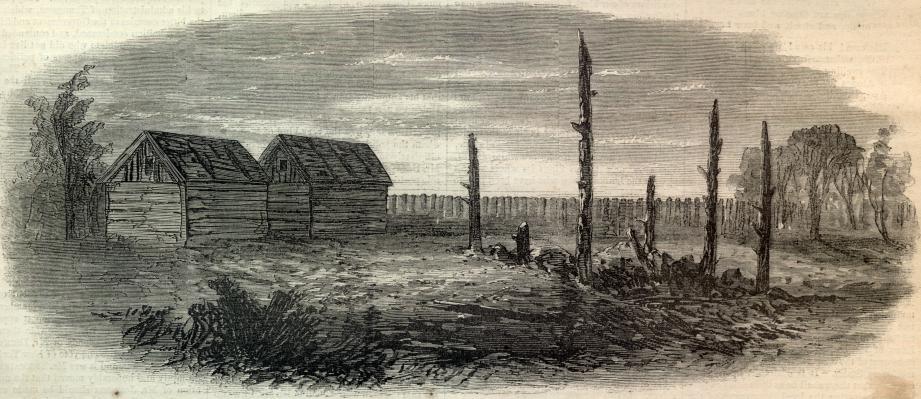 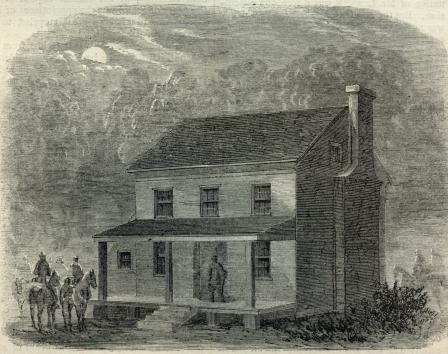 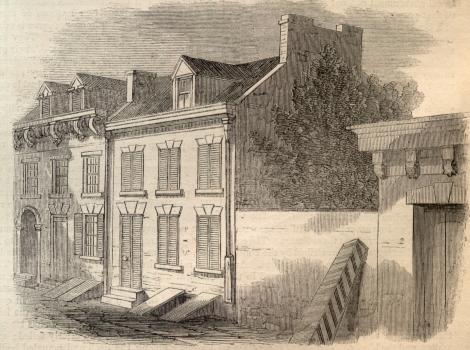
We acquired this leaf for the purpose of digitally preserving it for your research and enjoyment. If you would like to acquire the original 140+ year old Harper's Weekly leaf we used to create this page, it is available for a price of $195. Your purchase allows us to continue to archive more original material. For more information, contact paul@sonofthesouth.net |
||||||||||||||||||
|
|
||
|
|
Site Copyright 2003-2018 Son of the South. For Questions or comments about this collection, contact paul@sonofthesouth.net |
|
|
Are you Scared and Confused? Read My Snake Story, a story of hope and encouragement, to help you face your fears. |
||
